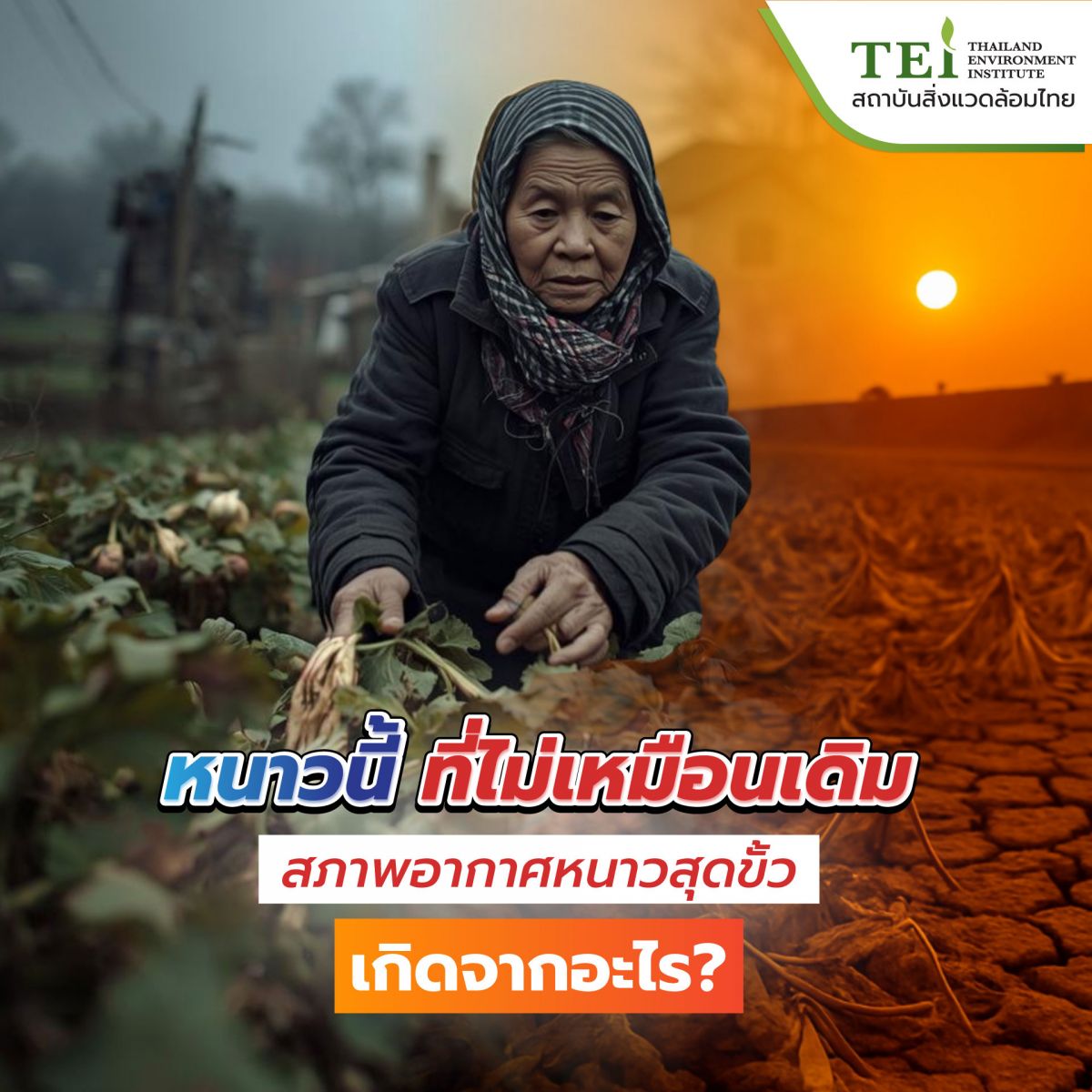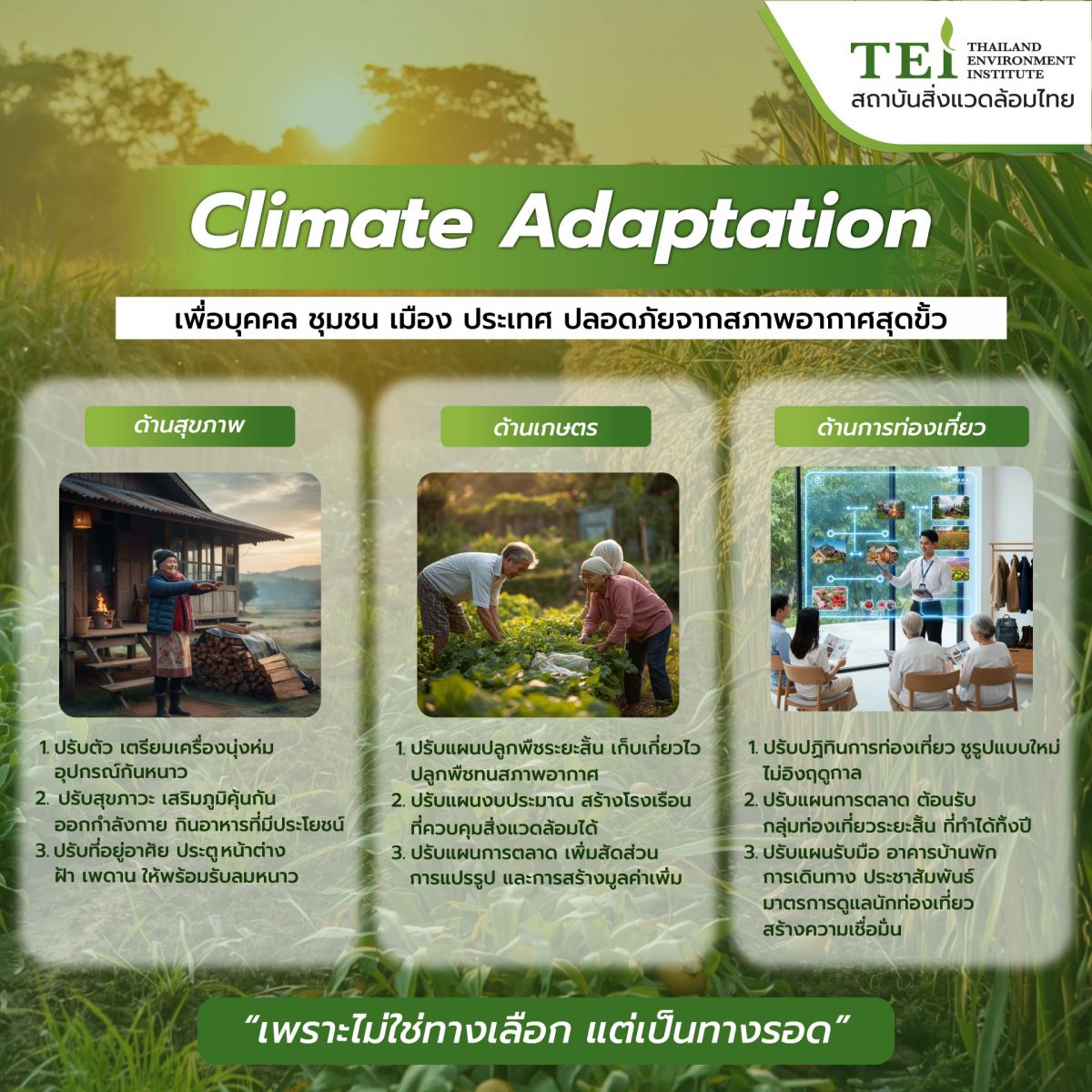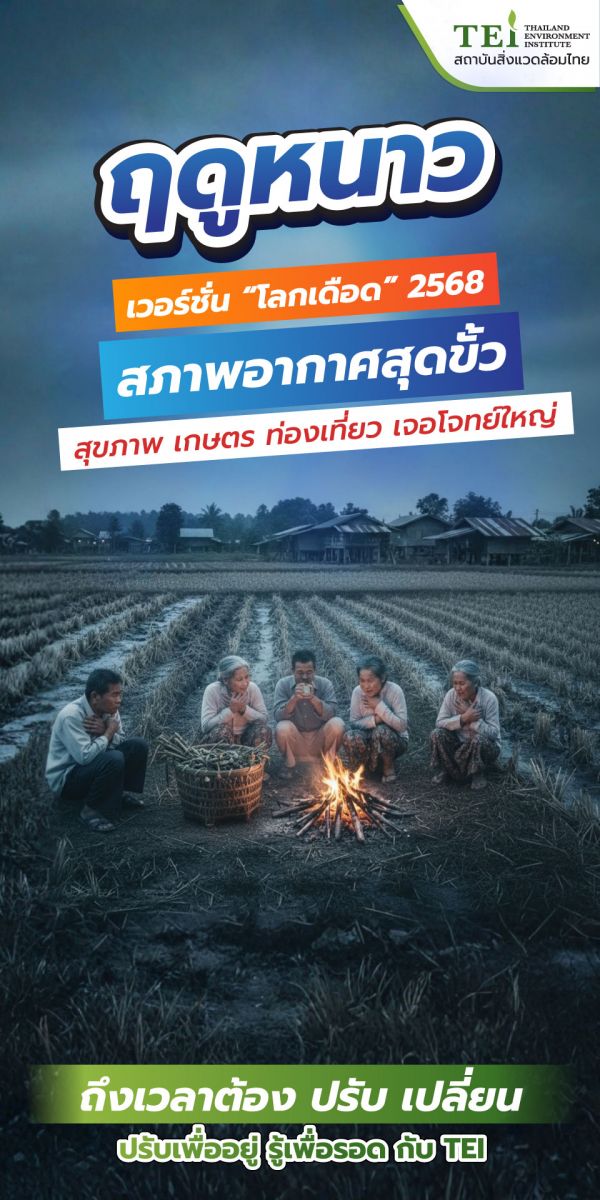
Thematic Areas: Climate Adaptation
Forget the traditional image of winter—a gradual cooling that lasts for months. From now on, we will face an extreme winter! This is the result of Climate Change, which is no longer just a warning sign but a tangible turning point for the seasons. Rapid cold, sudden cold, and extreme cold snaps will definitely visit Thailand. This year, the Thai Meteorological Department (TMD) announced that Thailand officially entered the winter season on October 23, 2025, and it is expected to last until February 2026. The average temperature is predicted to be slightly higher than last year.

However, we cannot overlook the climate volatility stemming from Climate Change, which has completely altered global weather patterns. Therefore, Winter 2025 will feature extreme cold on certain days and in certain areas, which will then alternate with extreme heat and rain. This volatile pattern is expected to occur throughout Thailand's winter season this year.
Such severe and volatile changes in winter weather patterns will directly impact Thais in three main areas:
1. Health: Weather volatility that exceeds the human body's ability to adapt quickly will be the first impact. People will get sick more easily, facing respiratory illnesses and immune system disorders, especially children, the elderly, and those with pre-existing conditions. Furthermore, sudden cold snaps could severely impact vulnerable groups in remote areas with insufficient access to warm clothing to cope with the extreme cold. The TMD forecasts that a cold air mass moving down from China will cover upper Thailand, causing temperatures in the northern and northeastern regions to drop sharply by 2-4°C, and mountaintops may experience cold weather below 15°C.
2. Agriculture: Some of Thailand's economic crops, which are preparing to flower, may be affected by abnormally cold weather, leading to lower yields. This could, in turn, affect consumer prices and the income of farmers themselves.
Especially 'rice farmers,' who cultivate one of the country's top economic crops, should be aware of the following risks this winter:
Effect on germination and seedlings: Temperatures below 15°C reduce water absorption and delay germination, as enzymes related to sprouting slow down. This results in stunted seedlings and low survival rates.
Effect on growth and photosynthesis: Temperatures below 18°C slow the photosynthesis process, hinder root expansion, and make it difficult to absorb fertilizer and nutrients, often causing yellowing leaves.
Effect on flowering and pollination: Temperatures below 18°C during panicle formation or flowering can cause pollen sterility. The sterility rate increases, leading to a high number of empty or unfilled grains and reduced yields.
Effect on milk and ripening stages: Temperatures below 20°C reduce sugar translocation, resulting in unfilled grains and lower grain weight. However, suitable cool temperatures (around 20–25°C) that are not excessively cold may help starch accumulation and improve grain quality.
In addition to problems affecting crop production, there is also the risk of 'rice diseases and pests.' Periods with temperatures around 20–25°C and relative humidity above 80% (often with morning dew or fog) are conducive to rice blast disease, brown leaf streak, and leaf folders. Conversely, during cold, dry periods with temperatures below 20°C and relative humidity below 60% (clear skies, strong sun), pests like dirty panicle disease, zigzag leafhoppers, and stem borers are likely to thrive.
3. Tourism: There may be a positive impact as domestic tourists seek to experience the cold weather. However, a rapid increase in tourists will strain the carrying capacity of both tourism operators and the natural resources of the destinations themselves.
The Thailand Environment Institute (TEI) recognizes the social and economic impacts of this "extreme weather" phenomenon, especially with the coming winter. TEI, therefore, proposes a Climate Adaptation mechanism at three levels: individual, community/city, and national.
TEI suggests the following Climate Adaptation guidelines focused on the individual level for the Winter 2025 'Boiling World' version:
On Health:
Adapt by preparing warm clothing and winter gear.
Adjust wellness habits: boost immunity through exercise and healthy eating.
Adapt living spaces: ensure doors, windows, and ceilings are ready for cold winds.
On Agriculture:
Adjust planting schedules: opt for short-term crops with fast harvests that are weather-tolerant.
Adjust budgets: build greenhouses or controlled-environment structures.
Adjust marketing plans: increase the proportion of processed and value-added products.
On Tourism:
Adjust the tourism calendar: promote new models that are not season-dependent.
Adjust marketing plans: welcome short-term tourist groups that can visit year-round.

The best defense is one built together. Dealing with extreme weather is not a one-person job. Individual adaptation is not enough; it must be simultaneous. At the community level, there must be effective warning systems and functioning mutual care networks.
At the national level: There must be clear policies, accurate forecasts, and a strong public health system. Furthermore, the threat isn't just the cold; it's the 'swing' (volatility) of the temperature, which could see us facing extremely hot days alternating with freezing cold days all within the same season.
In the era of 'Global Boiling,' adaptation is not a choice—it is the only way to survive. TEI invites all Thais to 'Adapt to Live, Learn to Survive' to build a society that is resilient and safe from this climate crisis together.

Share: